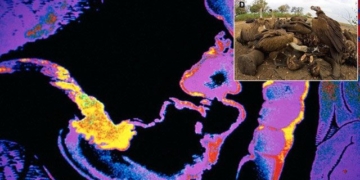Astronomers have dubbed it the “planetary killer,” as its impact with Earth would cause catastrophic ecological disasters.
Recently, astronomers discovered a giant asteroid named 2022 AP7, which has a diameter of 1,500 meters. This asteroid’s orbit lies within that of Earth and intersects with it. Such large asteroids are referred to as “planetary killers,” as a collision with Earth could lead to devastating ecological consequences.
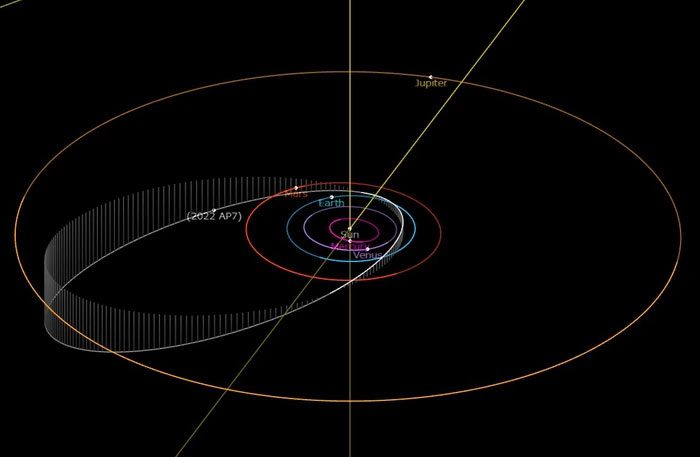
Orbit of asteroid 2022 AP7.
This type of asteroid is challenging to detect because it is obscured by the Sun, and the intense sunlight makes it difficult to track them. Large, advanced telescopes like Hubble and Webb must be shielded from the Sun’s blinding light, which could damage their delicate optical systems and prevent them from spotting such asteroids.
Astronomers took advantage of a short observational window at dusk and used the Dark Energy Camera (DECam) mounted on the 4-meter Víctor M. Blanco telescope at the Cerro Tololo Inter-American Observatory in Chile to discover three asteroids orbiting Earth. Apart from 2022 AP7, the other two asteroids are numbered 2021 LJ4 and 2021 PH27, both of which are also several kilometers in size.
The orbits of these two asteroids intersect with Earth’s less frequently, while 2022 AP7 poses a greater threat to our planet.
When 2022 AP7 was discovered, it was located 30 million kilometers from Earth, seemingly a safe distance. However, calculations indicate that its orbit will continue to bring it closer to Earth, and it may come into close proximity at some point in the future.
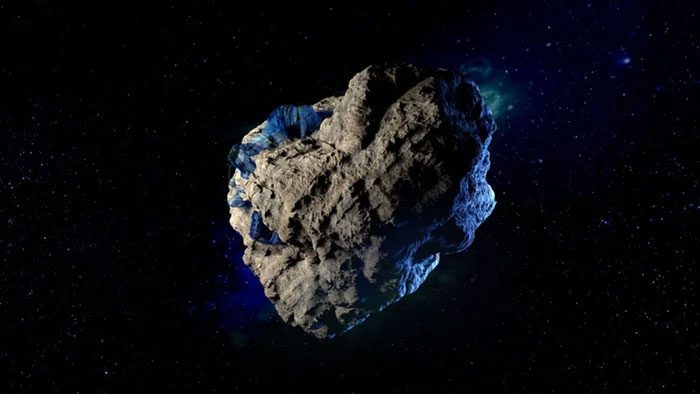
When 2022 AP7 was discovered, it was 30 million kilometers from Earth.
As for when 2022 AP7 might come into contact with Earth, astronomers are still unable to make predictions, and in any case, it will not make an appearance in 2023.
In fact, there are approximately 19,500 asteroids that have been discovered in Earth’s vicinity, including over 2,000 asteroids with diameters greater than 1 kilometer and hundreds with diameters of 4 kilometers. The orbits of these asteroids intersect with Earth’s orbit, and any asteroid that comes close to Earth could pose threats to humanity.
Sixty-five million years ago, a 10-kilometer asteroid struck Earth, causing the extinction of the dinosaurs, who had dominated the planet for 165 million years, with 85% of species becoming extinct. This event significantly altered the course of evolution in our planet’s ecosystem.
However, this collision left a crater about 280 kilometers in diameter on the Yucatan Peninsula in Mexico, and its impact energy was equivalent to about 120 trillion tons of TNT, more than 10,000 times the total yield of all nuclear bombs in the world combined.
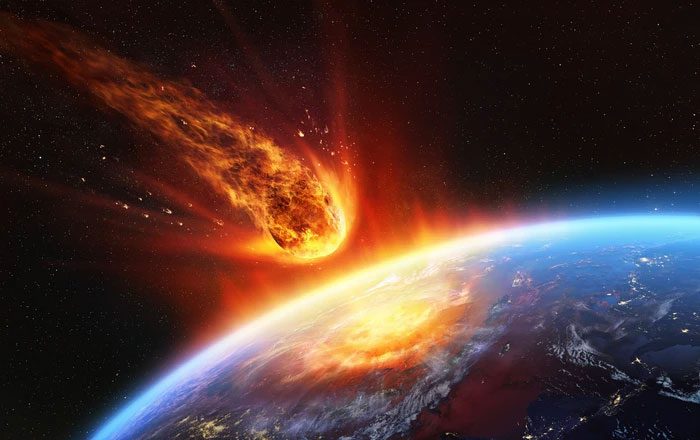
The orbital speed of 2022 AP7 is 17.38 km/s.
According to scientists, the orbital period of 2022 AP7 (one orbit around the Sun) is 1,830 days (5.01 years), with a aphelion distance of 5.01 AU (astronomical units, where 1 AU is about 150 million kilometers) and a perihelion distance of 0.83 AU. It is considered to have an average diameter of approximately 1.5 kilometers.
The orbital speed of 2022 AP7 is 17.38 km/s, but it will not be traveling at this speed upon impact with Earth; instead, it will add to Earth’s rotational speed, leading scientists to estimate it will collide with Earth at a speed of 20 km/s.
Using this information, we can simply calculate the impact energy using the formula E=1/2mv^2, revealing that the energy of 2022 AP7 upon impact with Earth would be approximately 7*10^20 J, equivalent to 7 quintillion joules, or about 167.3 billion tons of TNT, which is roughly equivalent to 12.87 million atomic bombs detonating simultaneously like those dropped on Hiroshima.
It is important to note that the total number of nuclear warheads in the world contains less than 10 billion tons of TNT; thus, the power of 2022 AP7 is equivalent to nearly 17 times the total yield of all nuclear bombs worldwide.
Although this calculation may not be entirely precise, the impact energy will also vary based on the collision speed and density of the asteroid. Historical experience and scientific research indicate that if an asteroid measuring several tens of meters were to strike a populated area, it could destroy a city; if an asteroid larger than 100 meters were to fall, it could devastate a country. Accordingly, an asteroid larger than one kilometer impacting Earth would possess enough power to bring about a catastrophic disaster for humanity and the ecosystem.
Massive tsunamis and earthquakes would strike in succession, with coastal cities potentially being completely submerged; fire and smoke would block out the Sun, and survivors of the disaster would face the consequences of a nuclear winter: all plants would lose their ability to photosynthesize and die, herbivores would be the first to go extinct, followed by carnivores, breaking the food chain and resulting in a mass extinction of species, including microorganisms.
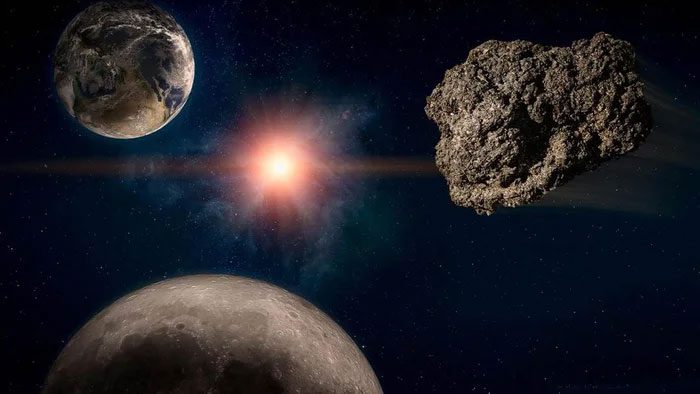
Asteroid 2022 AP7 will not pose a significant threat to Earth in the near future.
Some may believe that humanity possesses enough advanced technology to save itself. However, under the impact of a global disaster, even the most developed coastal cities would be submerged, global air would become polluted, and water, electricity, and transportation would be disrupted, making all modern production and living activities unsustainable.
A nuclear winter may not last indefinitely; the Earth’s surface may again see sunlight after a few years or decades. But by then, Earth would no longer be the planet we know; original species would essentially be extinct, and the evolution of new life would take tens of thousands, even millions of years to develop again.
Fortunately, ongoing scientific monitoring has revealed that these Earth-threatening asteroids, including 2022 AP7, will not pose significant threats in the near future. We still have time to unite and collaborate to advance science and collectively address potential disasters.




















































